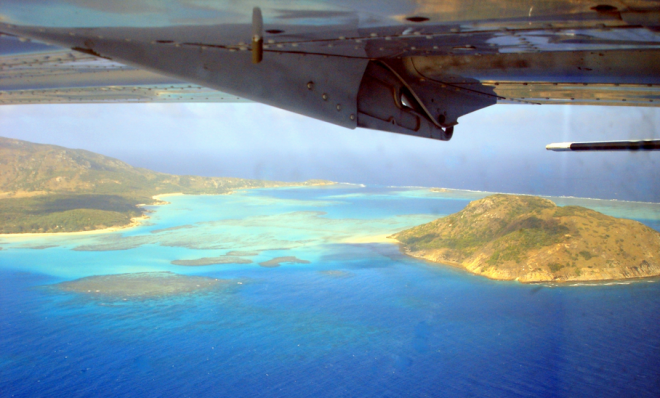
The world is warming. Glaciers are melting. Added carbon dioxide gas is causing our seas to become acidic. This in turn melts corals, and causes a host of environmental problems scientists are just beginning to quantify. But measuring the effect of acidification on oceans and seas is tricky because water moves and it can be deep. Different species are affected by acidification in different ways. Scientists from Israel have found a new way to make sense of the unknowns.
To get a clearer picture of how ocean acidification is affecting large marine areas, the group of Israeli researchers from Hebrew University studied a 5,000 km long strip of ocean from Eilat to the Seychelles crossing the Red Sea, the Gulf of Aden and the Western Indian Ocean.
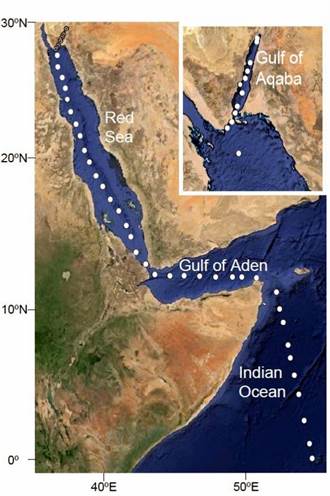
A Google Earth image of the research cruise showing the sampling stations along the ~5,000 Km oceanographic transect described in the PNAS paper.
The researchers developed a new method to simultaneously assess the overall calcification rates of coral reefs and pelagic (open sea) plankton over a whole oceanic basin, based on variations in surface water chemistry.
Getting a baseline down for science
These variations result from the tendency of organisms that precipitate calcium carbonate skeletons to replace some of the calcium in their skeletons with other elements (e.g. the element strontium).
These replacements depend on growth conditions and are typical for each group of organisms. Owing to this characteristic, corals produce calcium carbonate with a different chemistry than calcareous (composed largely of calcium carbonate) plankton, and their overall effect alters the chemistry of the ocean water.
This is the first study that demonstrates the feasibility of quantifying this type of information on an oceanic basin scale.
The group estimated that pelagic plankton precipitate 80% of the Red Sea calcium carbonate, and coral reefs precipitate about 20%.
This data they say is a crucial milestone if we wish to track the effect of human-caused activity since it is not possible to quantify change without having objective baseline conditions.
Monitoring the variations in coral and plankton growth rates every few years can provide essential information regarding rates of environmental change in tropical and subtropical seas like the Red Sea, Caribbean and South China Sea.
The research was published in PNAS (Proceedings of the National Academy of Sciences of the United States of America) and was supported by the Israel Science Foundation, the Bill and Melinda Gates Foundation and the Israeli Ministry of Science and Technology.
Top photo: An aerial photo of a coral reef. Researchers developed a new tool to quantify the effect of ocean acidification on calcifying organisms. (Photo: Boaz Lazar, Hebrew University); Plankton photo from Shutterstock

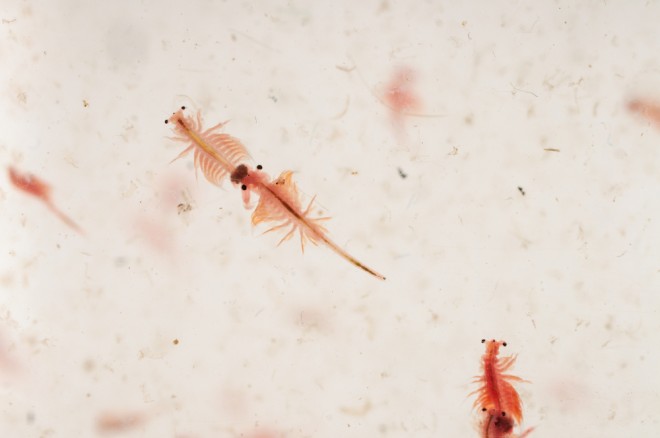
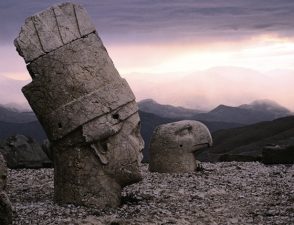

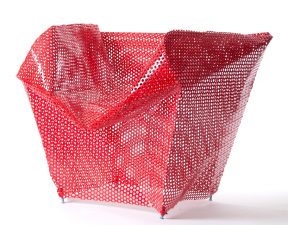
Comments are closed.